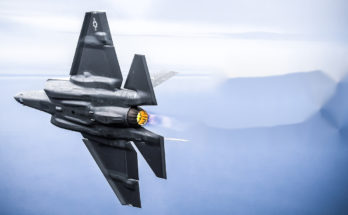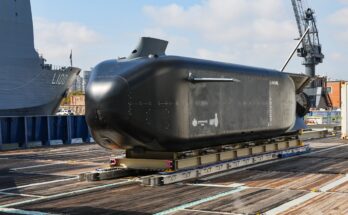
Aviation Ordnanceman Airman Charles Lindsay loads sonarbuoys into a P-3 Orion. Image – U.S. Navy /Photgrapher's Mate 1st Class John Collins
Following the failure of an earlier merger attempt to combine with Ultra Electronics, a new suitor swept in and bought Sparton. This time it was a private equity firm, Cerberus Capital Management. In March 2019, Cerberus successfully acquired Sparton for $181.5 million.
In early 2018, the U.S. Department of Justice put the kibosh on Ultra Electronics’ $234 million acquisition of Sparton. According to the DoJ, the merger would have created a monopolistic supplier of sonobuoy systems to the U.S. Navy.
The ruling went even further – opening an investigation of the two companies’ sonobuoy joint venture, ERAPSCO, which they formed in 1987. Ideally, the DoJ would like to see the companies build up their own individual abilities to produce sonobuoys, eventually dissolving the ERAPSCO joint venture.
In terms of defense contracting, sonobuoys reveal Sparton’s fundamental strength (as well as its weakness) in that they represent the company’s sole product line. Ultra Electronics and Sparton (including their joint ventures ERAPSCO and Sonobuoy TechSystems) dominate the sonobuoy production market, where they hold an almost unassailable position – which came under the gaze of anti-trust authorities.
In addition, the U.S. Navy may have become tired of dealing with the same two sonobuoy makers, Sparton and Ultra Electronics. In a January 2014 solicitation for the Coherent Source Sonobuoy project, the Navy announced it was searching for other manufacturers. However, while other companies can make sonobuoys – probably very good ones – they would be priced much higher than those produced by Sparton and Ultra, which owe much of their control of market share to pricing as well as product quality.
Along these lines, the U.S. Navy tried to block ERAPSCO from bidding on the next-generation variant, the SSQ-125A. However, Sparton (one of half of ERAPSCO, with Ultra Electronics being the other half) filed a protest and won. The U.S. Navy had to reverse its decision and awarded ERAPSCO half of the SSQ-125A production contract in December 2018. The other half went to Lockheed Martin (possibly to make the contract look competitive), which has entered the A-size sonobuoy market thanks to its expertise in making A-size autonomous underwater vehicles (AUVs) that can be launched from the same canisters as the SSQ-125(V) sonobuoys.
Sparton anticipates that should the Navy push for dissolution of the ERAPSCO joint venture, the service would in turn assist in funding the company’s transition to independently developing, producing, and selling sonobuoys. However, as evidenced by the shipbuilding industry, when there are only two manufacturers, each one tends to get a piece of a contract in order to keep the production lines and facilities viable.
Despite these misgivings from the service, ERAPSCO scored a major sonobouy contract in July 2019 when the Navy purchased thousands of various sonobuoys for some $1 billion. These systems will be delivered through 2023 and are aimed at dealing with increased production of submarines by China and undersea warfare activity in the South China Sea.
A military history enthusiast, Richard began at Forecast International as editor of the World Weapons Weekly newsletter. As the Internet grew in importance as a research tool, he helped design the company's Forecast Intelligence Center and currently coordinates the EMarket Alert newsletters for clients. Richard also manages social media efforts, including two new blogs: Defense & Security Monitor, covering defense systems and international issues, and Flight Plan, which focuses on commercial aviation and space systems. For over 30 years, Richard has authored the Defense & Aerospace Companies, Volume I (North America) and Volume II (International) services. The two books provide detailed data on major aerospace and defense contractors. He also edits the International Contractors service, a database that tracks all the contractors involved in the programs covered in the FI library. More recently he was appointed Manager, Information Services Group (ISG), a new unit that encompasses developing outbound content for both Forecast International and Military Periscope.




